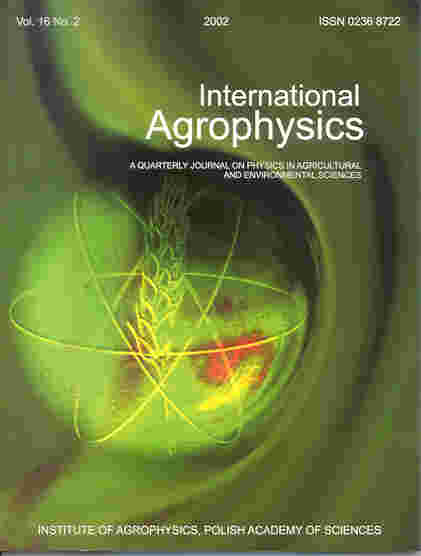|
|
|

|
|
| International Agrophysics |
| wydawca: | Instytut Agrofizyki
im. B. Dobrzańskiego
PAN
w Lublinie |
| ISSN: |
0236-8722 |
vol. 19, nr. 3 (2005)
|
|
|
poprzedni artykuł wróć do listy artykułów następny artykuł
|
|
|
Structural stability of exposed gully wall in Central Eastern Nigeria as affected by soil properties
|
|
| (pobierz wersję PDF ) )
|
|
|
C.A. Igwe, N. Ejiofor
|
|
|
Department of Soil Science, University of Nigeria, Nsukka, Nigeria |
|
|
vol. 19 (2005), nr. 3,
pp. 215-222
|
|
|
streszczenie
We studied the soil stability of a gully wall in a gully erosion prone area of Central Eastern Nigeria. The objective was to investigate the physicochemical properties of the gully wall soils and to relate them to the collapsing and stability of the gullies. Ten soil layers were sampled for analysis. The bulk density was high while the saturated hydraulic conductivity (Ks) was moderately high resulting in rapid permeability for the soil layers. The liquid limits (LL) and plastic limits (PL) were low. The water- stable aggregates (WSA) were mostly aggregates of <0.50 mm. Such soils with fine aggregate sizes erode more than those with bigger aggregate sizes. Mean-weight diameter (MWD) positively correlated significantly with plasticity index but negatively correlated with soil organic matter. Soil properties that related well with the dispersion indices were water-dispersible clay (WDC), moisture at field capacity (FC), permanent wilting point (PWP), available water capacity (AWC), LL and plastic index (PI). The PI, K+, and Ca2+ were the properties which increased aggregation while soil organic matter (SOM) which was low in the soil played little or no role in the aggregation of the studied soils.
|
|
słowa kluczowe
gully wall, soil properties, aggregate stability, slumping, permeability, moisture content
|
|
|
|
|
|
|